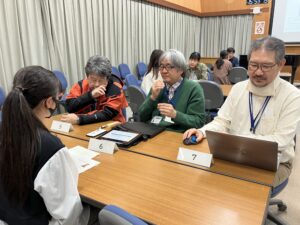Speaker1: Miho Tan
Affiliation: SOKENDAI 3rd year (D1)
(Supervisor: Mami Machida, Tomoya Takiwaki, Kazunari Iwasaki)
Title: Intermittent X-ray Binary Jets and Their Interaction with Self-Induced Turbulent Media
Speaker2: Shun Ishigami
Affiliation: SOKENDAI 5th year (D3)
(Supervisor: Hirohisa Hara, Yukio Katsukawa, Masahito Kubo)
Title: Study of the Heating Mechanism of the Quiet Region Loops
Speaker3: Tomohiro Yoshida
Affiliation: SOKENDAI 5th year (D3)
(Supervisor: Hideko Nomura, Misato Fukagawa, Akimasa Kataoka)
Title: Gas surface density profiles in protoplanetary disks revealed by pressure-broadened CO line wings


